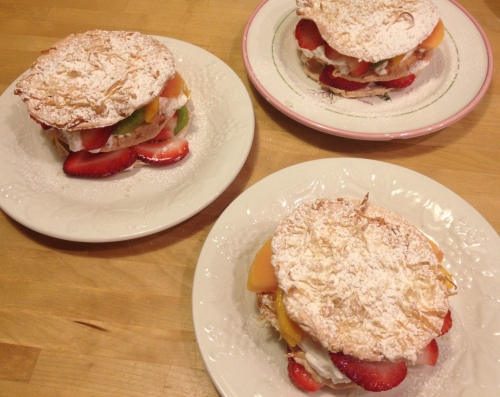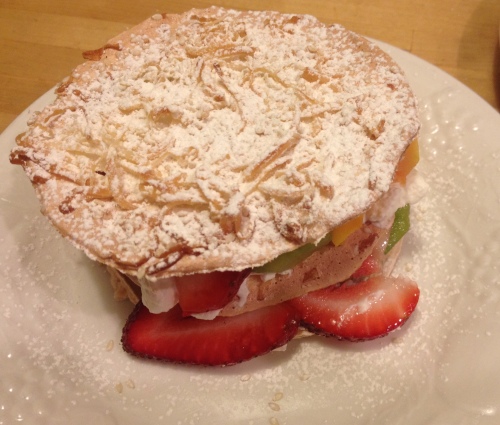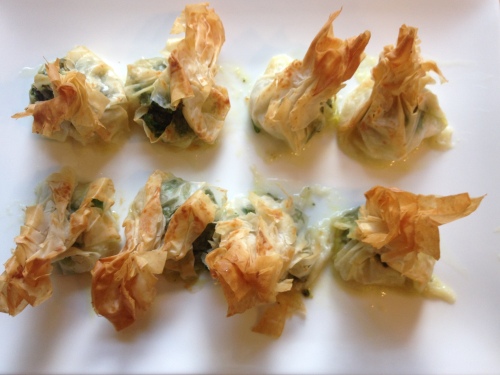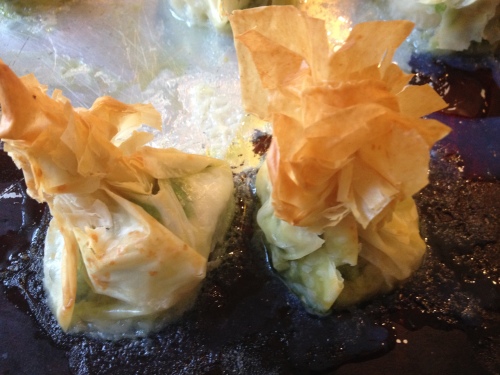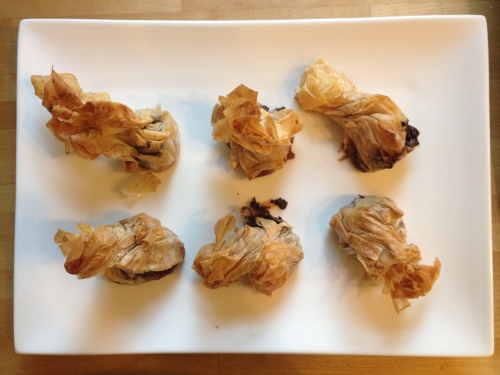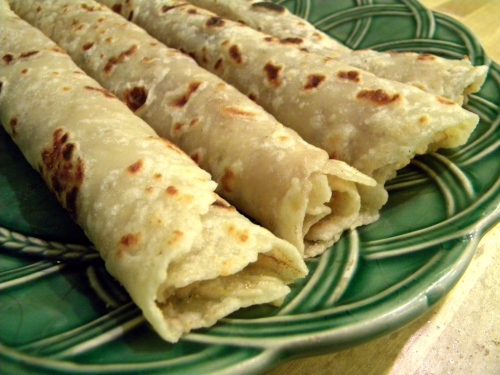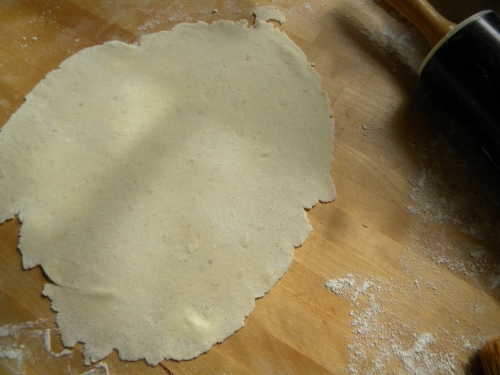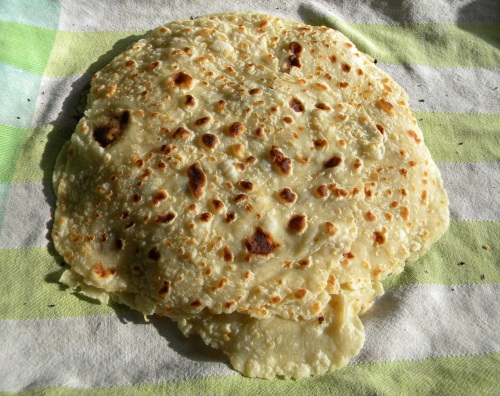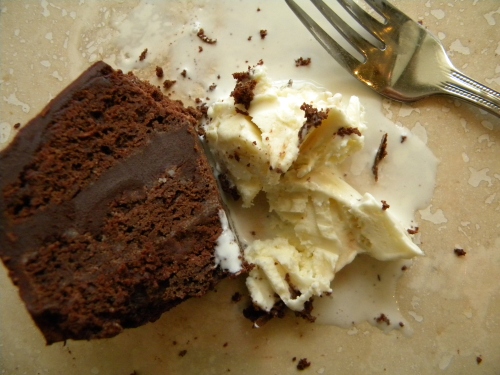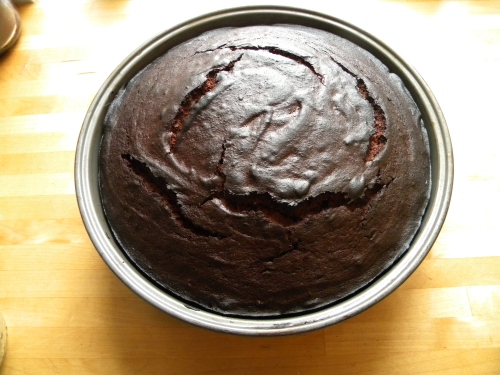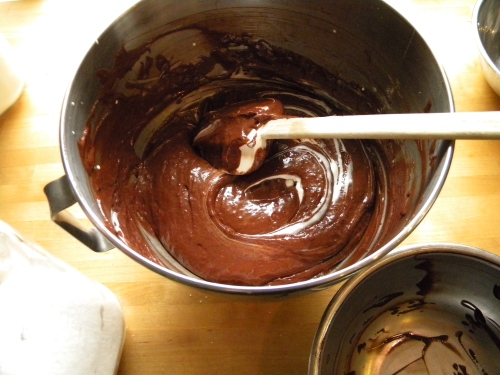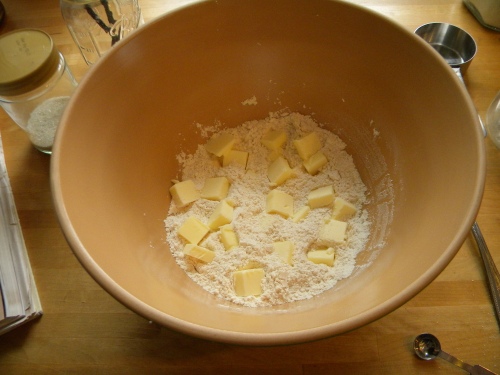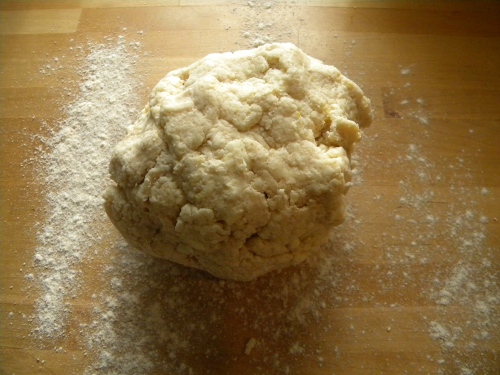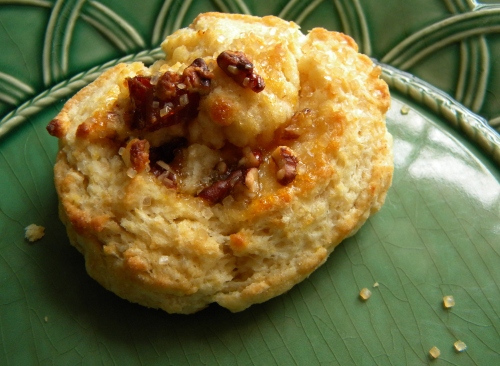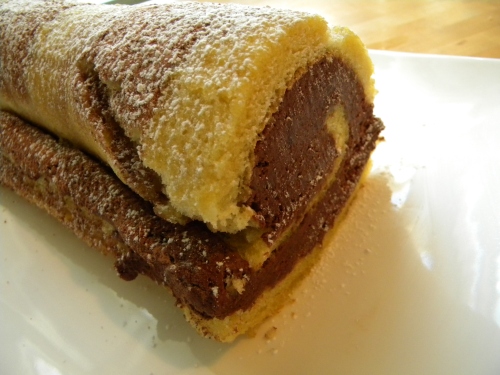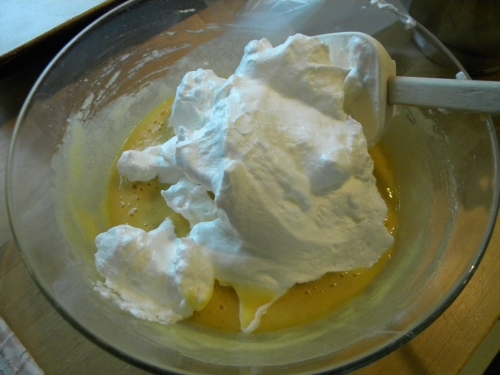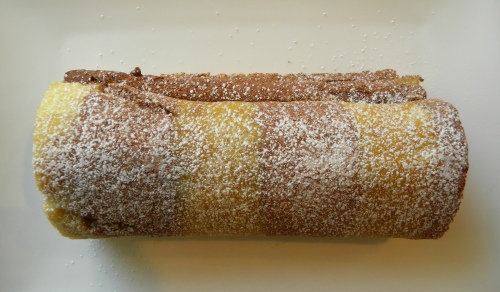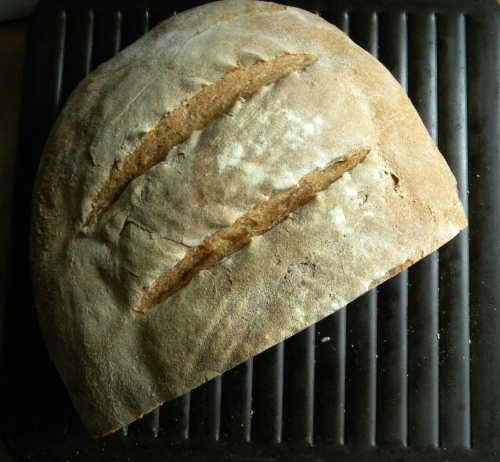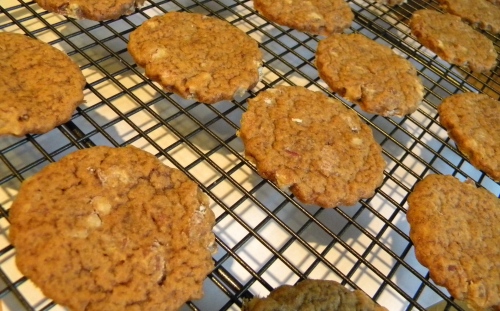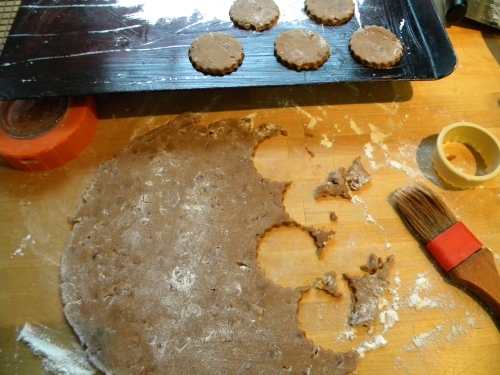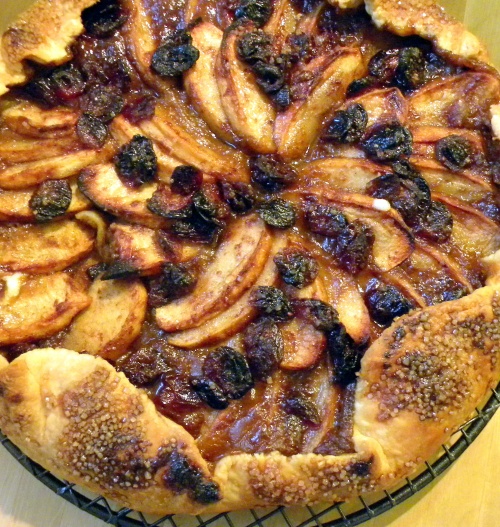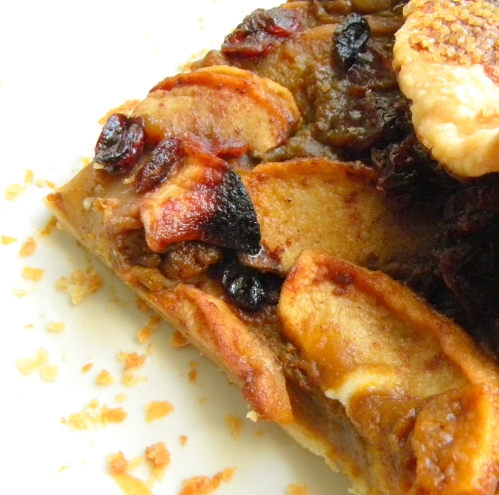I’ve been having a problem downloading photographs from my camera lately…apparently it’s a device driver problem with my PC, and so far I haven’t been able to correct it. In the mean time, I’m using my phone as my camera and emailing the photos to myself. The phone does a pretty good job, but I miss having the control that I have with the camera.
Tropical Napoleons are a reinterpretation of the classical French napoleon with a tropical twist. The recipe is contributed to Baking With Julia by Charlotte Akoto, who demonstrated the meringue recipes for the cookbook and the PBS series. A classic napoleon is constructed of layers of puff pastry alternating with a filling of pastry cream and optional fruit preserves, usually raspberry jam. Akoto’s version layers coconut meringue wafers with rum-spiked whipped cream and tropical fruits and berries.
I found the meringue wafer cookies to be a challenge. Egg whites are beaten with sugar, rum, and vanilla, until they are stiff and shiny, then shredded coconut is folded in. I was fine up to that point. To form the wafers, you cut a template from plastic (I used a quart-size yogurt container lid). You then spread the meringue on a greased and floured baking sheet, using the template as a guide. I wasn’t sure how thick the meringue should be. With the first batch, I forgot to sprinkle the meringue circles with coconut and sesame seeds (those became the bottom layers.) By the second batch, my meringue had started to deflate, so I tried beating it again, unsuccessfully. I ended up using the somewhat collapsed meringue for my second batch, but remembered to top them with coconut and sesame seeds before baking. After baking, the meringue wafers were still sticky and chewy, so getting them off of the baking sheets was challenging.
The rest of the recipe consists in assembling the components. To create the napoleons, the coconut meringue wafers are layered with the whipped cream and tropical fruits. I used mango, papaya, kiwi fruit, and strawberries. The flavors were varied and refreshing, the coconut a nice complement to the fruits. Contrasting textures added to the complexity of the napoleons. The recipe can be found on pages 393-394 of Baking With Julia. The Tuesdays With Dorie blog has a post with links to bakers’ experiences with the recipe.
